Physics
Sign up for our newsletter
We summarize the week's scientific breakthroughs every Thursday.
-
 Quantum Physics
Quantum PhysicsOne photon wrangles 3,000 atoms into quantum entanglement
A single photon can trigger the creation of quantum entanglement between thousands of atoms.
By Andrew Grant -
 Psychology
PsychologyRethinking light’s speed, helping young adults with autism and more reader feedback
Readers discuss the best ways to replicate findings in scientific studies, help teenagers with autism transition to adulthood, and more.
-
 Quantum Physics
Quantum PhysicsQuantum links provide clues to causation
Quantum entanglement enables physicists to determine cause and effect just by tracking the association between two measurements.
By Andrew Grant -
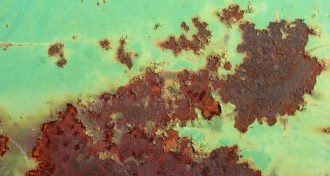 Tech
Tech‘Rust’ chronicles humankind’s incessant battle with corrosion
‘Rust’ recounts humanity’s unending battle against corrosion, which each year costs the United States an estimated $437 billion — more than all natural disasters combined.
By Sid Perkins -
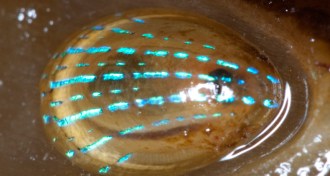 Animals
AnimalsSnail shell creates blue iridescence with mineral
Mollusk shines blue using calcium compound rather than organic molecule.
-
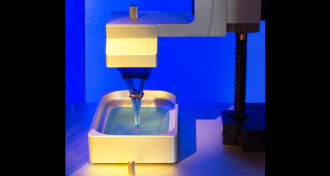 Chemistry
ChemistryNew method leaves older ways of 3-D printing in its goopy wake
Finding the sweet spot in a pool of resin, chemists can create detailed 3-D objects faster than 3-D printers.
By Beth Mole -
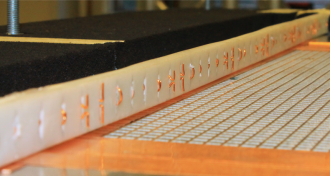 Materials Science
Materials ScienceCopper-wire ‘metamirror’ reflects selectively
A metamaterial mirror reflects only a single wavelength of light, potentially leading to more compact and affordable radio antennas.
By Andrew Grant -
 Quantum Physics
Quantum PhysicsFinding quantum entanglement in a crowd
Physicists have measured entanglement between pairs of photons within a macroscopic beam of light, a first step toward understanding how particles’ quantum connections lead to large-scale effects.
By Andrew Grant -
 Physics
PhysicsHigh-temperature superconductivity record awaits confirmation
A hydrogen-sulfur compound under pressure may transport electrical current with no resistance at a record high temperature.
By Andrew Grant -
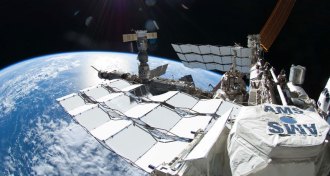 Particle Physics
Particle PhysicsSam Ting tries to expose dark matter’s mysteries
Particle physicist Sam Ting is applying a meticulous approach to analyzing positrons in space, testing whether they can reveal clues about dark matter.
By Andrew Grant -
 Quantum Physics
Quantum PhysicsLight trick can retrieve missed messages
Even if photons pass you by, you can still snatch a signal from their electromagnetic wake, physicists propose.
By Andrew Grant -
 Physics
PhysicsWhy lattes are less prone to spills than regular coffee
Foam dampens liquids’ sloshing, keeping keeps lattes and beer from spilling so easily, researchers find.